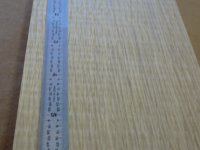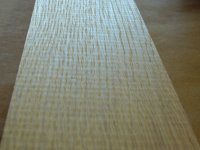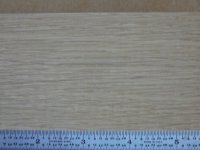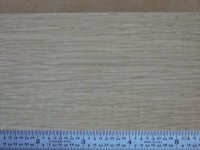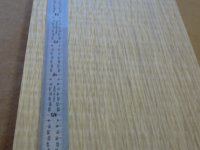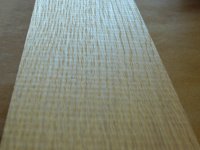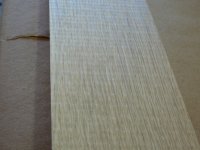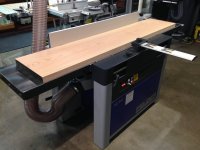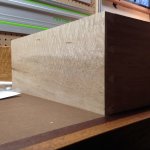Tom,
I replaced the cutter head on my 12" Powermatic Planer with the Shelix Cutter head. Yes it does cut quieter with less tear out but the resulting surface finish is a scalloped appearance that has to be sanded or scraped. If I had know this I would have purchased solid carbide knives for my 12" planer. I realize that for a 20" wide planer solid carbide knives are most likely not available and If I weren't a one man shop I wouldn't consider them. I do have solid carbide knives on my 8" wide Poitras Jointer and they perform excellent.
Here are a few pictures to give you an idea of what to expect with sharp cutters on the Shelix cutter head. It took sanding with 100 grit to remove the scalloped topography on these boards.
Jack

